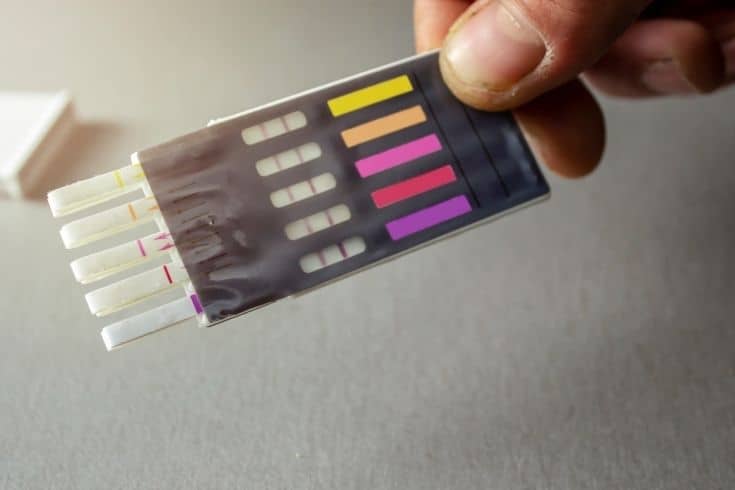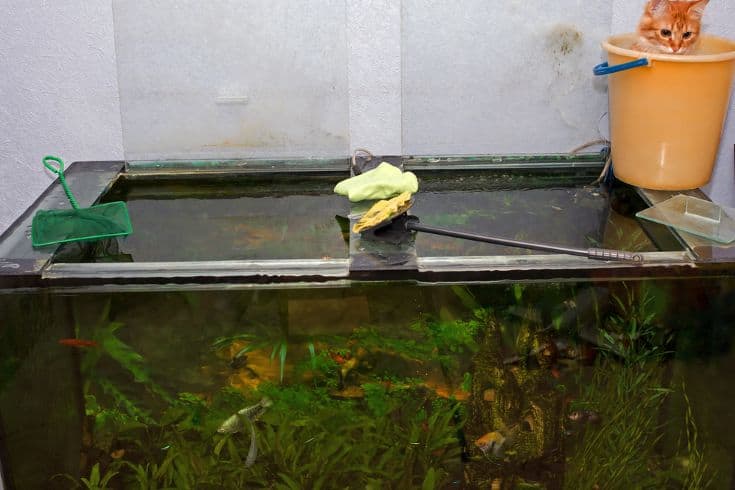Goldfish owners understand the importance of providing their fish with a stimulating and visually appealing environment. One way to do this is to add driftwood to the tank. But is driftwood good for goldfish?
The answer is both yes and no. Driftwood can provide many benefits for goldfish, but it also has the potential to cause problems. In this article, we’ll discuss the pros and cons of using driftwood in a goldfish tank so you can make an informed decision about whether or not it’s right for your fish.
What is Driftwood?
Driftwood is wood that has been washed ashore by the tide or floating downstream in a river. It’s often weathered and worn and sometimes covered in algae.
While driftwood can come from any type of tree, mangrove wood is most commonly used in aquariums. This is because mangroves tend to have a lower tannin content than other types of wood, making them less likely to release tannins into the water and discolor it.
Benefits of Driftwood for Goldfish
There are several benefits to using driftwood in a goldfish tank:
1. It Provides a Natural Environment
Driftwood can help make your goldfish tank look more natural and less like an aquarium. This is because it resembles wood found in a river or pond. Though a natural environment is not strictly required for goldfish, it can provide them with a more stimulating environment.
In addition to looking more natural, driftwood also adds interest and visual appeal to an aquarium. This is because it’s often gnarled and twisted, making it visually interesting. Goldfish are also attracted to the movement of driftwood in the water.
2. It’s a Source of Food and Shelter
Driftwood can provide goldfish with a place to hide and feel safe. The nooks, crannies, and crevices of driftwood make perfect hiding spots for goldfish seeking a break from the hustle and bustle of the tank. Whether their tankmates are getting too rough or just feeling stressed, goldfish will often seek refuge in driftwood.
In addition to providing shelter, driftwood can also be a food source for goldfish. This is because driftwood is often covered in algae, which goldfish love to eat. Given that these charming, intelligent fish are omnivorous, providing them with a source of algae is a great way to ensure they’re getting all the nutrients they need.
3. It Helps Balance the Water Chemistry

Driftwood can help maintain a healthy pH balance in your goldfish tank. This is because it releases tannins into the water, lowering the pH. Goldfish typically require a water pH of between 6.5 and 7.5, so adding driftwood to the tank can help maintain this balance. This is especially the case if your water source is high in alkalinity.
Another way driftwood can help maintain water quality is by providing a place for beneficial bacteria to grow. These bacteria play an important role in the nitrogen cycle, which helps to keep your goldfish tank clean and healthy. When ammonia and nitrites build up in the water, these bacteria convert them into nitrates, which are much less harmful to goldfish.
Drawbacks of Driftwood for Goldfish
Though there are several benefits to using driftwood in a goldfish tank, there are also some potential drawbacks:
1. It Can Raise the Ammonia Level
Remarkable as it may be, driftwood can raise the ammonia level in your goldfish tank. This is because it’s often covered in algae, which release ammonia into the water when they die. In addition, as the driftwood breaks down, it also releases ammonia into the water.
For these reasons, it’s important to closely monitor the ammonia levels in your goldfish tank if you’re using driftwood. If the levels get too high, it can be toxic to your fish.
2. It Can Discolor the Water

Another potential drawback of driftwood is that it can discolor the water. This is because it releases tannins into the water, which can cause the water to turn brown and cloudy. While this may not be a problem for some people, others may find it unsightly.
If you’re concerned about the water discoloration, you can do a few things. First, you can soak the driftwood in water for several weeks before adding it to the tank. This will help to leach out some of the tannins. Alternatively, you can place the driftwood in a mesh bag and attach it to the side of the tank. This will allow the water to flow through the wood, which will also help to leach out some of the tannins.
3. Water pH May Become Too Acidic
If you’re not careful, the tannins released by driftwood can lower the pH of your goldfish tank to the point where it becomes too acidic. Tannic acid is a strong acid that can quickly lower the pH of your water if you’re not careful. A mild pH decline is not necessarily a problem, but a sharp decline can be stressful for your fish and even kill them.
It is important to remember that although goldfish can tolerate a wide range of water conditions, they prefer a neutral pH. If the pH of your goldfish tank becomes too acidic, it’s important to take action to raise it. This can be done by adding a piece of limestone or dolomite to the tank.
Prepping Your Driftwood
Before adding your driftwood to the goldfish tank, it’s important to prep it properly. This will help minimize the risk of water quality problems and ensure your fish stay healthy. Here are some of the things you need to do:
1. Rinse It Thoroughly
The first thing you need to do is rinse the driftwood thoroughly. Before doing so, make it a point to remove any protruding pieces of bark, branches, or any kind of debris using a brush. Then, run the piece of driftwood under warm water for several minutes to remove any dirt, debris, or algae.
While it’s good to be as thorough as possible while rinsing your driftwood, you should steer clear of using any kind of soap. This is because soap can be toxic to fish and may cause health problems.
2. Soak It for Several Weeks
After rinsing the driftwood, you need to soak it for several weeks. This is an important step because it will help leach out some of the tannins. To do this, simply place the driftwood in a large vessel, and then fill it with water. Allow the driftwood to soak for several weeks, making sure to change the water every few days.
Generally, a good sign that the water needs changing is if it starts to turn brown. When the water turns brown, it’s a sign that the tannins are starting to leach out of the wood. And once the water starts to clear up, it’s a sign that the tannins have been leached out, and the driftwood is ready for the next step.
3. Boil It
The next step is to boil the driftwood. This will help to kill any bacteria or parasites that may be living on it. To do this, simply place the driftwood in a large pot and then fill it with water. Bring the water to a boil and allow the driftwood to simmer for 30 minutes. After this, drain the water and boil the driftwood again.
You might need to repeat this process several times before the water is completely clear. Not only will it rid your driftwood of any residual tannin, but boiling will also kill any disease-carrying bacteria or fungi that may be found on your driftwood. Once this process is complete, you can move on to the next step.
4. Cure It
The last step is to cure the driftwood. This is an important step because it will help to remove any remaining toxins that may be present in the wood. To do this, simply place the driftwood in the tank and allow it to cure for several weeks. This can be done by adding a small amount of water to the tank each day.
Once the driftwood has cured, anchor it to the bottom of the tank using rocks or gravel. This will help to keep it in place and prevent it from floating to the surface. Then, you can go ahead and add your goldfish to the tank!
The Takeaway
So, is driftwood good for goldfish? Yes, but only if you take the proper precautions. By choosing a safe type of wood and prep it properly, you can minimize the risk of water quality problems and ensure that your fish stay healthy.
We hope you found this article helpful. If you have any questions or comments, feel free to reach out to us in the comments section below. And be sure to check out our other articles on goldfish care for more tips and information on keeping your fish healthy and happy! Thanks for reading, and happy fishkeeping!
